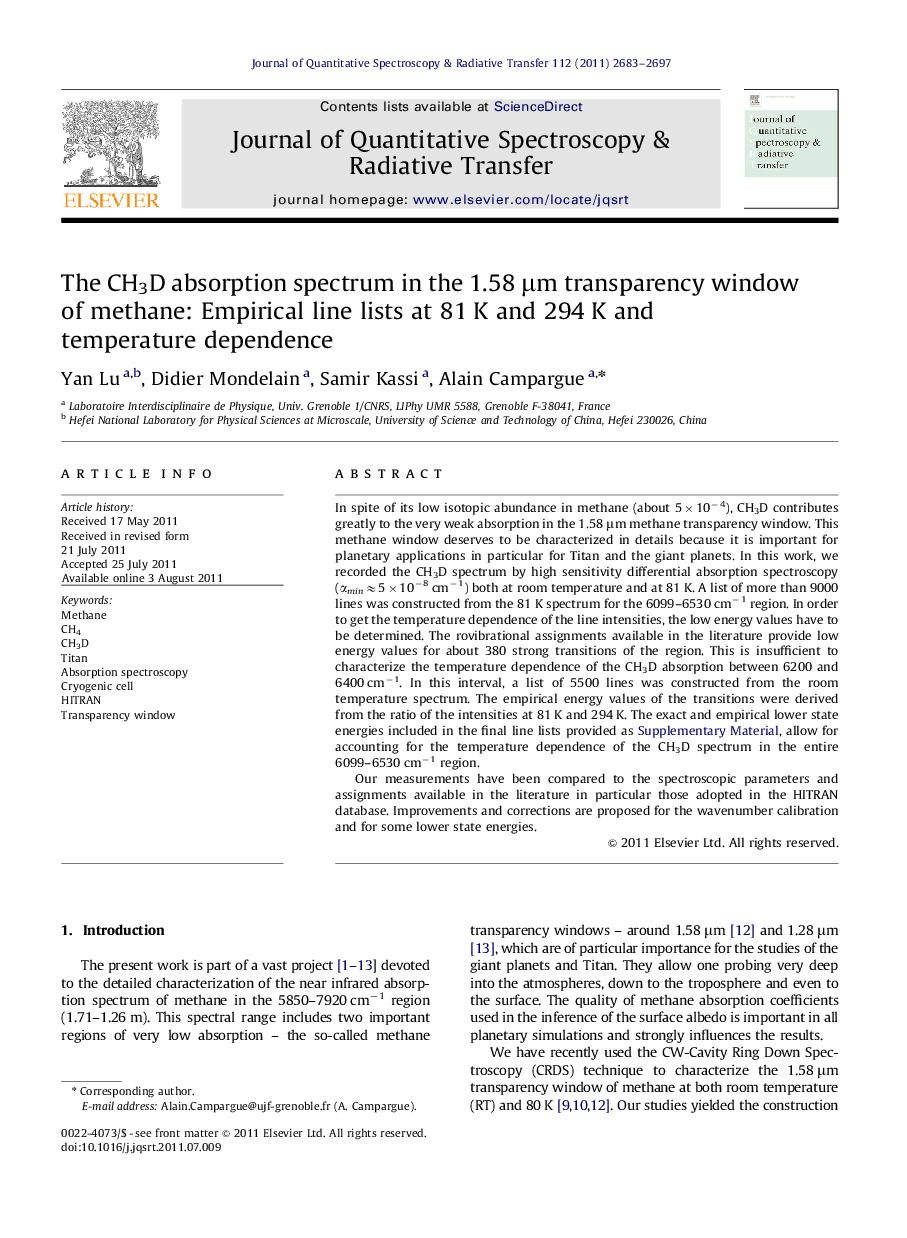| Article ID | Journal | Published Year | Pages | File Type |
|---|---|---|---|---|
| 5429369 | Journal of Quantitative Spectroscopy and Radiative Transfer | 2011 | 15 Pages |
In spite of its low isotopic abundance in methane (about 5Ã10â4), CH3D contributes greatly to the very weak absorption in the 1.58 μm methane transparency window. This methane window deserves to be characterized in details because it is important for planetary applications in particular for Titan and the giant planets. In this work, we recorded the CH3D spectrum by high sensitivity differential absorption spectroscopy (αminâ5Ã10â8 cmâ1) both at room temperature and at 81 K. A list of more than 9000 lines was constructed from the 81 K spectrum for the 6099-6530 cmâ1 region. In order to get the temperature dependence of the line intensities, the low energy values have to be determined. The rovibrational assignments available in the literature provide low energy values for about 380 strong transitions of the region. This is insufficient to characterize the temperature dependence of the CH3D absorption between 6200 and 6400 cmâ1. In this interval, a list of 5500 lines was constructed from the room temperature spectrum. The empirical energy values of the transitions were derived from the ratio of the intensities at 81 K and 294 K. The exact and empirical lower state energies included in the final line lists provided as Supplementary Material, allow for accounting for the temperature dependence of the CH3D spectrum in the entire 6099-6530 cmâ1 region.Our measurements have been compared to the spectroscopic parameters and assignments available in the literature in particular those adopted in the HITRAN database. Improvements and corrections are proposed for the wavenumber calibration and for some lower state energies.
⺠Importance of the 1.58 μm transparency window of methane for planetology. ⺠CH3D, major contributor to the methane absorption in the region. ⺠Absorption spectrum of CH3D recorded at 81 K and 294 K between 6900 and 7900 cmâ1. ⺠List of about 9000 and 5500 lines constructed from the 81 and 294 K spectra. ⺠Temperature dependence obtained for most of the CH3D absorption of the region.
